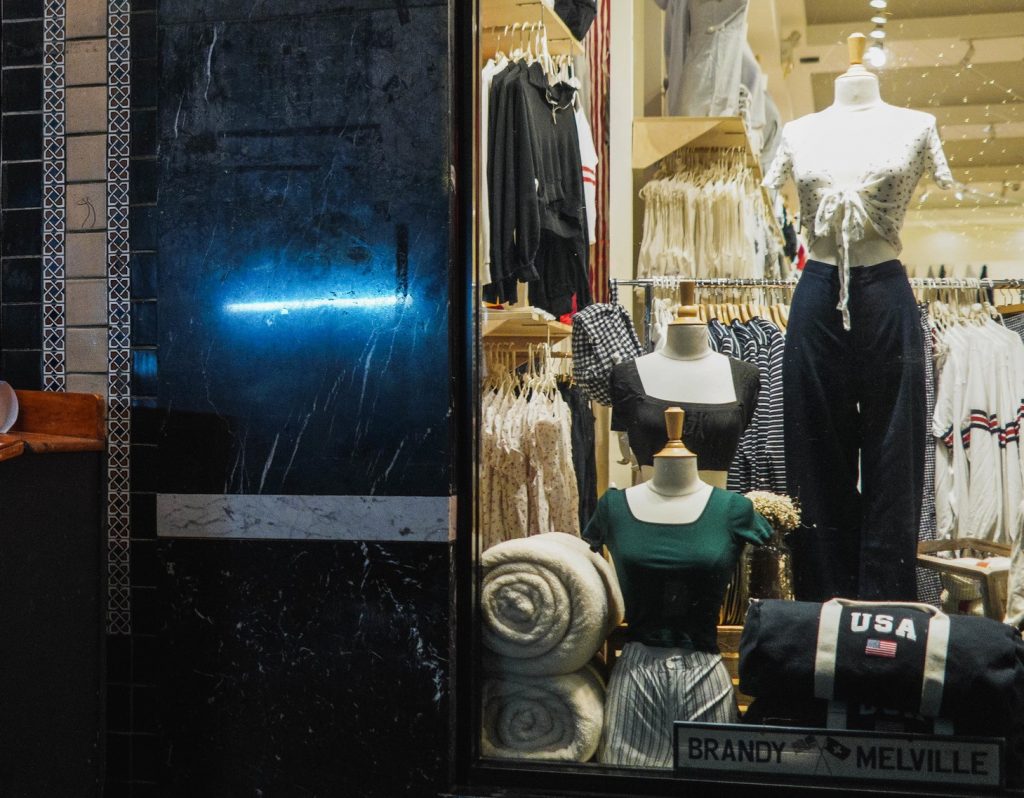
The first time I walked into Brandy Melville, I was 15 years old. I had avoided it my entire life, opting to find my clothes at any of the surrounding stores instead. Fully aware of the reputation that preceded the popular clothing brand, I made my way inside, unsurprised to find the store’s “one size fits all” policy didn’t fit my body type. I left as self-loathing filled my mind.
Funnily enough, this issue is only the beginning of a long list of “body-negative” clothing trends that have dominated the fashion and entertainment industry in recent years.
Brandy Melville, a popular clothing brand among teenagers, has come under fire for its lack of size inclusivity. The brand is notorious for only providing “one size fits all” clothes, which in reality only fit a niche set of individuals who would generally be categorized as a size small. This policy, though not explicitly stated by the brand, embraces the idea that only individuals with smaller, skinnier body types are “worthy” enough to purchase and wear the clothing, leaving the rest of us feeling ashamed of what should make us feel beautiful.
Next of course, would have to be the “corset trend”, which has seen a resurgence of popularity on social media and celebrity fashion. The corset, for those who are unaware, is a garment designed to tightly cinch at the waist, creating the sought-after “hourglass figure.” It has long been known that corsets tend to make the person who is wearing them feel uncomfortable and search for air, further perpetuating the idea that only a certain body type is desirable. According to the Royal College of Surgeons of England, continuous usage of corsets over time could lead to “poor digestion, and over time the back muscle could atrophy.“ Given the illusory body image and actual negative health effects of corsets, one must wonder why they still continue to be at the forefront of celebrity and fast fashion.
Social media and the entertainment industry have long been influential in trendsetting and fashion habits. Throughout the beginning of this year, Y2K trends have been leaning towards the re-glorification of ultra thin bodies, hiding the extreme dieting and exercise regime that is hidden behind the low rise jeans and skin tight crop tops. Most of the clothing of that era achieved only one common goal: celebrating a body as thin as humanly possible. Not only is this toxic mindset harmful to individuals on social media and influenced by celebrities, it promotes an unhealthy lifestyle that can have perilous consequences later on.
But how can we talk about the harmful body image implications of clothing if we don’t mention modeling? Though there has been some small improvement in the model industry concerning body type inclusivity, non-ultra skinny individuals are still woefully underrepresented on the runway. Many fashion brands and houses still opt for putting thinness at the forefront of their trends, a trait which spills over into celebrity fashion and then to the general public. Furthermore, pictures and videos of models are generally severely photoshopped and retouched, creating a false picture of what the “perfect body” should look like. By failing to embrace all colors, shapes and sizes, the model industry is further promoting existing feelings of inadequacy and shame within people who are already negatively affected by the other “body-negative” trends mentioned before.
Let’s be real. It’s 2023. It is time for the fashion industry to realize that beauty comes in all shapes and sizes and that everyone deserves to feel valued and celebrated.


